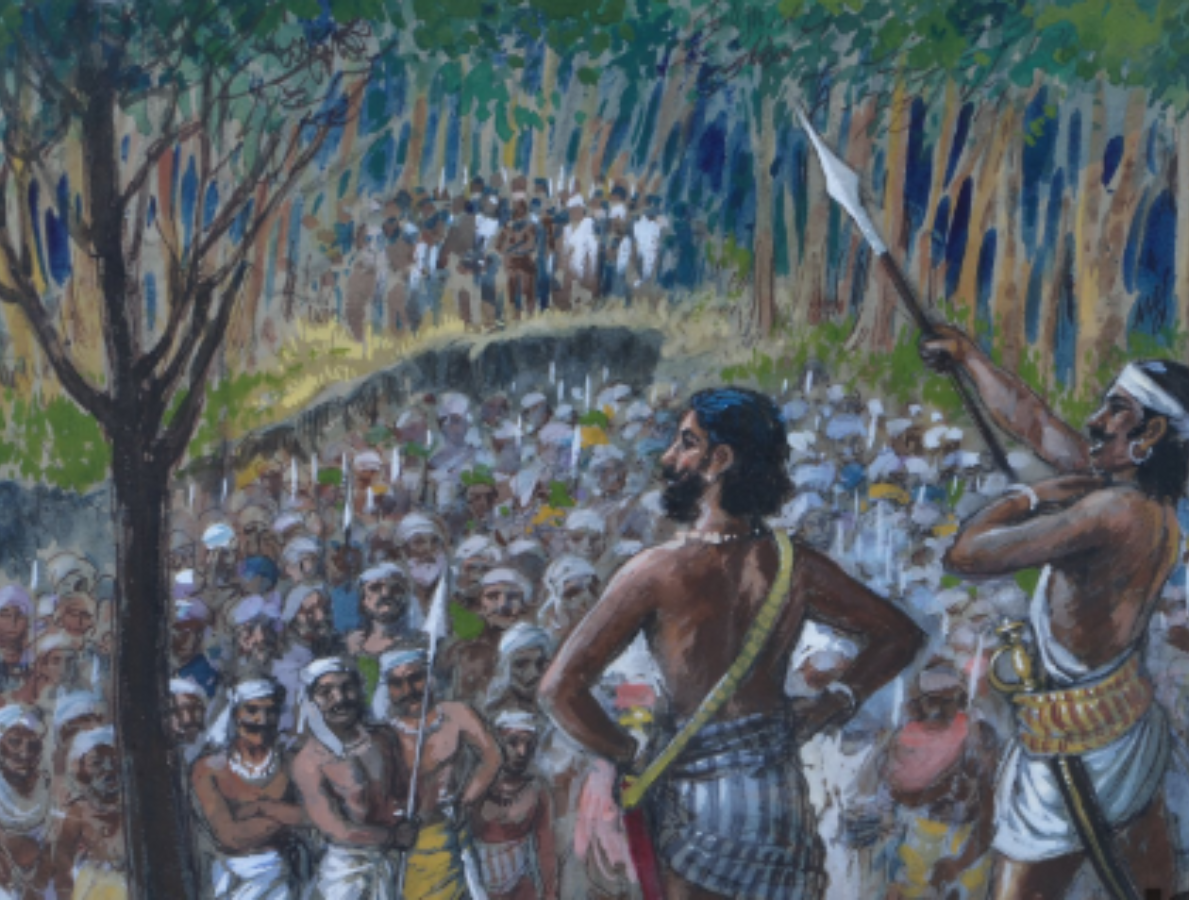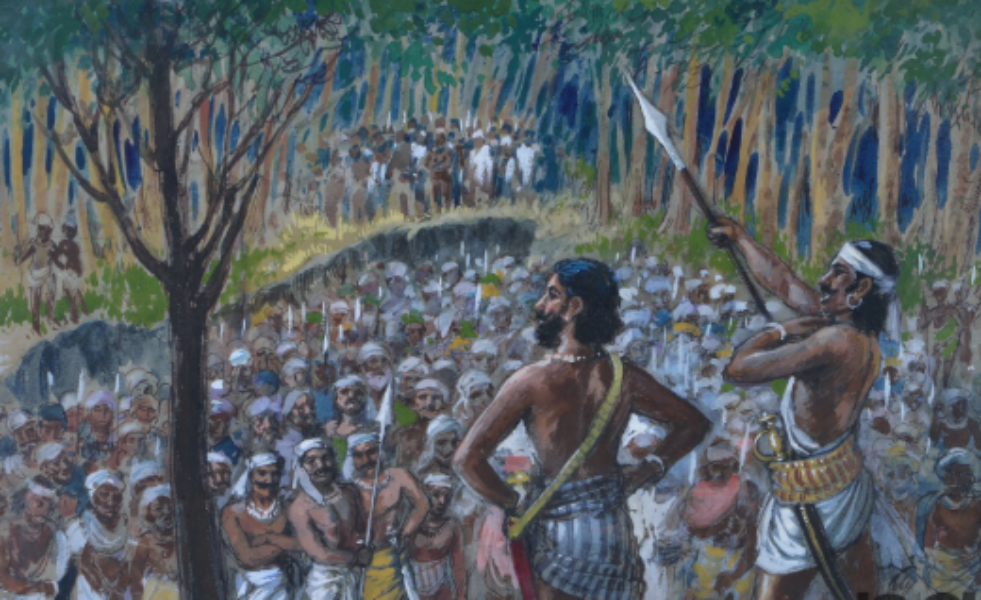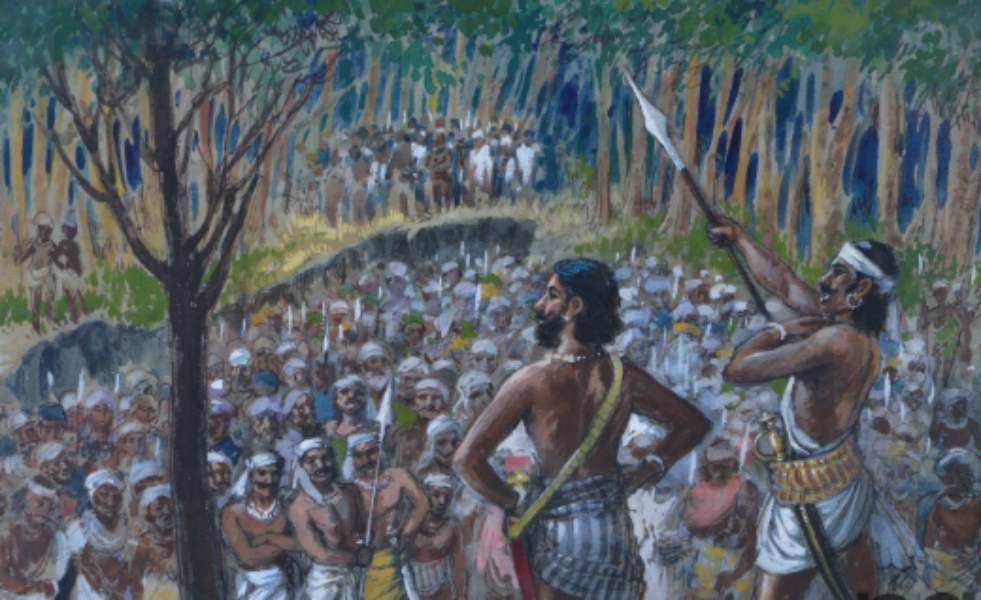State
Tribe Name
Art Type
short description
M. R. Acharekar's painting titled "The Santhal Rebellion, 1855" becomes a very evocative symbolic work of art for the Santhals' resistance against British colonial rule and against the oppression of moneylenders. It is a water-colour-and-tempera-on-paper work, one of the fifty-two commissioned paintings created to commemorate the hundredth year of the freedom movement in India (1757-1856) and can be viewed at the National Gallery of Modern Art, New Delhi.
Thumbnail

Filter Postion
Left
Filter Background
Off
Theme
Filter Header Image

content
Image

description
M. R. Acharekar's painting titled "The Santhal Rebellion, 1855" becomes a very evocative symbolic work of art for the Santhals' resistance against British colonial rule and against the oppression of moneylenders. It is a water-colour-and-tempera-on-paper work, one of the fifty-two commissioned paintings created to commemorate the hundredth year of the freedom movement in India (1757-1856) and can be viewed at the National Gallery of Modern Art, New Delhi.
The Santhal Rebellion (1855-1856) was the rebellion led by Sidhu and Kanhu Murmus against the exploitative revenue policies of the British and undue harassment from money-lenders (Mahajans) and Zamindars. The murky crowd of Santhals greeted on the forest fringes. By their sheer number, they became bonded laborers and very heavily taxed and became naturally edged towards rebellion.
Acharekar's painting conveys the intensity of the rebellion with its picture of Santhal warriors, armed with bows and arrows, taking on British troops. Such realism combined with an impressionistic style enhances the emotional turmoil and struggle of the natives. The revolt has been subdued, but its long-term consequences on many other resistance movements in India have been indelible.
The Santhal Rebellion (1855-1856) was the rebellion led by Sidhu and Kanhu Murmus against the exploitative revenue policies of the British and undue harassment from money-lenders (Mahajans) and Zamindars. The murky crowd of Santhals greeted on the forest fringes. By their sheer number, they became bonded laborers and very heavily taxed and became naturally edged towards rebellion.
Acharekar's painting conveys the intensity of the rebellion with its picture of Santhal warriors, armed with bows and arrows, taking on British troops. Such realism combined with an impressionistic style enhances the emotional turmoil and struggle of the natives. The revolt has been subdued, but its long-term consequences on many other resistance movements in India have been indelible.
Image Mode
landscape
promoted
On
Verified
Off
